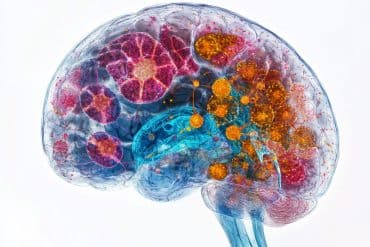Researchers at Massachusetts Eye and Ear/Harvard Medical School and the University of Crete have conducted a phase I/II clinical trial investigating the efficacy of statins (cholesterol-lowering medications) for the treatment of patients with the dry form of age-related macular degeneration (AMD), the leading cause of blindness in the developed world. Although effective treatments are available for the wet form of AMD, they are currently lacking for the more prevalent dry form. The researchers found evidence that treatment with high-dose atorvastatin (80mg) is associated with regression of lipid deposits and improvement in visual acuity, without progression to advanced disease, in high-risk AMD patients. Their findings were published in EBioMedicine, a new online journal led by editors of the journals Cell and The Lancet, and not only further the connection between lipids, AMD and atherosclerosis, but also present a potential therapy for some patients with dry AMD.
“We found that intensive doses of statins carry the potential for clearing up the lipid debris that can lead to vision impairment in a subset of patients with macular degeneration,” said Joan W. Miller, M.D., the Henry Willard Williams Professor and Chair of Ophthalmology at Harvard Medical School and Chief of Ophthalmology at Massachusetts Eye and Ear and Massachusetts General Hospital. “We hope that this promising preliminary clinical trial will be the foundation for an effective treatment for millions of patients afflicted with AMD.”
Affecting more than 150 million patients worldwide, AMD is associated with an accumulation of drusen (deposits of lipid and fatty proteins) under the retina, and patients with AMD experience blurred vision or blindness in the center of the visual field. There are two forms of AMD: “wet” and “dry.” The wet form accounts for approximately 15 percent of AMD cases and is treated using therapies previously developed at Mass. Eye and Ear/Harvard Medical School. The “dry” form is more common, accounting for approximately 85 percent of cases, and effective therapies are currently lacking.
Ophthalmologists and vision researchers have long suspected that there may be a connection between dry AMD and atherosclerosis. In dry AMD, physicians often see soft, lipid-rich drusen in the outer retina, similar to the build-up of lipid material in the inner walls of blood vessels in atherosclerosis. Statin use is widespread in middle-aged and older individuals, who also have an increased risk of AMD; however, previous studies have shown very little correlation between regular statin use and improvements in AMD. The authors of the EBioMedicine paper hypothesized that, due to the heterogeneous nature of the disease, patients with soft, lipid-rich drusen may respond better to statins prescribed at higher dosages.
“Not all cases of dry AMD are the exactly the same, and our findings suggest that if statins are going to help, they will be most effective when prescribed at high dosages in patients with an accumulation of soft, lipid material” said Demetrios Vavvas, M.D., Ph.D., a clinician scientist at Mass. Eye and Ear and Co-Director of the Ocular Regenerative Medicine Institute at Harvard Medical School. “These data suggest that it may be possible to eventually have a treatment that not only arrests the disease but also reverses its damage and improves the visual acuity in some patients.”

Twenty-three patients with dry AMD marked by soft lipid deposits in the outer retina were prescribed a high dose (80mg) of atorvastatin, the generic name of the statin marketed as Lipitor® and several generic equivalents. Of the 23 patients, 10 experienced an elimination of the deposits under the retina and mild improvement in visual acuity. Other techniques that have attempted to eliminate the deposits have mostly failed with the disease continuing to progress to more advanced dry AMD or a conversion to the wet form of AMD.
As the next step for this line of research, the investigators plan to expand to a larger prospective multicenter trial to further investigate the efficacy of the treatment in a larger sample of patients with dry AMD.
“This is a very accessible, FDA-approved drug that we have tremendous experience with,” said Dr. Vavvas. “Millions of patients take it for high cholesterol and heart disease, and based on our early results, we believe it offers the potential to halt progression of this disease, but possibly even to restore function in some patients with dry AMD.”
Authors on the EBioMedicine paper include senior author Joan W. Miller, M.D., FARVO, first author Demetrios G. Vavvas, M.D., Ph.D., Anthony B. Daniels, M.D., John I. Loewenstein, M.D., Lucy H. Young, M.D., Ph.D., Evangelos S. Gragoudas, M.D., Dean Eliott, M.D., and Ivana K. Kim, M.D., of the Department of Ophthalmology at Mass. Eye and Ear/Harvard Medical School, Jeremy W. Goldfarb, M.D., of the Department of Anesthesiology at Mass. Eye and Ear/Harvard Medical School, and Zoi G. Kapsala, M.D., Emmanuel Ganotakis, M.D., and Miltiadis K. Tsilimbaris, M.D., Ph.D. of the Department of Ophthalmology at the University of Crete in Greece.
Funding: This work was supported by the Yeatts Family Foundation, the Loefflers Family Foundation and the Research to Prevent Blindness Foundation.
Source: Suzanne Day – Massachusetts Eye and Ear
Image Source: The image is credited to NEI/NIH and is in the public domain
Original Research: Full open access research for “Regression of some High-Risk Features of Age-Related Macular Degeneration (AMD) in Patients Receiving Intensive Statin Treatment” by Demetrios G. Vavvas, Anthony B. Daniels, Zoi G. Kapsala, Jeremy W. Goldfarb, Emmanuel Ganotakis, John I. Loewenstein, Lucy H. Young, Evangelos S. Gragoudas, Dean Eliott, Ivana K. Kim, Miltiadis K. Tsilimbaris, and Joan W. Miller in EBioMedicine. Published online February 4 2016 doi:10.1016/j.ebiom.2016.01.033
Abstract
Regression of some High-Risk Features of Age-Related Macular Degeneration (AMD) in Patients Receiving Intensive Statin Treatment
Importance
Age-related macular degeneration (AMD) remains the leading cause of blindness in developed countries, and affects more than 150 million worldwide. Despite effective anti-angiogenic therapies for the less prevalent neovascular form of AMD, treatments are lacking for the more prevalent dry form. Similarities in risk factors and pathogenesis between AMD and atherosclerosis have led investigators to study the effects of statins on AMD incidence and progression with mixed results. A limitation of these studies has been the heterogeneity of AMD disease and the lack of standardization in statin dosage.
Objective
We were interested in studying the effects of high-dose statins, similar to those showing regression of atherosclerotic plaques, in AMD.
Design
Pilot multicenter open-label prospective clinical study of 26 patients with diagnosis of AMD and the presence of many large, soft drusenoid deposits. Patients received 80 mg of atorvastatin daily and were monitored at baseline and every 3 months with complete ophthalmologic exam, best corrected visual acuity (VA), fundus photographs, optical coherence tomography (OCT), and blood work (AST, ALT, CPK, total cholesterol, TSH, creatinine, as well as a pregnancy test for premenopausal women).
Results
Twenty-three subjects completed a minimum follow-up of 12 months. High-dose atorvastatin resulted in regression of drusen deposits associated with vision gain (+ 3.3 letters, p = 0.06) in 10 patients. No subjects progressed to advanced neovascular AMD.
Conclusions
High-dose statins may result in resolution of drusenoid pigment epithelial detachments (PEDs) and improvement in VA, without atrophy or neovascularization in a high-risk subgroup of AMD patients. Confirmation from larger studies is warranted.
“Regression of some High-Risk Features of Age-Related Macular Degeneration (AMD) in Patients Receiving Intensive Statin Treatment” by Demetrios G. Vavvas, Anthony B. Daniels, Zoi G. Kapsala, Jeremy W. Goldfarb, Emmanuel Ganotakis, John I. Loewenstein, Lucy H. Young, Evangelos S. Gragoudas, Dean Eliott, Ivana K. Kim, Miltiadis K. Tsilimbaris, and Joan W. Miller in EBioMedicine. Published online February 4 2016 doi:10.1016/j.ebiom.2016.01.033






